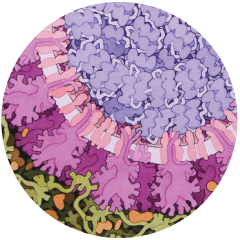The healthcare industry weathered the COVID-19 pandemic through a combination of shutdowns, social distancing, and equipping staff with personal protective equipment — all this on top of the usual infection prevention practices.
A vaccine is on the way, but it will be months before shots are available to everyone who needs one. Thus, the winter will not be the time to ease these precautions, especially with a resurgence of cases after the year-end holidays.
The CDC says people should wear a mask, wash hands often, and stay six feet or more away from others, even after receiving two doses of the COVID-19 vaccine.
Vaccine Won’t Be a Quick Fix
“What’s important here is that along with having this great tool — a vaccine that is highly effective — we need to keep other strategies, such as reducing contact with other people and wearing masks,” says Eli Rosenberg, PhD, associate professor of epidemiology and biostatistics at the University at Albany, New York.
It could take most of 2021 to vaccinate most Americans and end the pandemic. “We’re going to have only partial community protection for quite some time,” Rosenberg cautions. “We don’t want people to think the pandemic is over as the first vaccines are rolled out, because it’s so limited. Our society will look a lot like it does now for the next year.”
Researchers still need more information about how well the vaccines can reduce viral transmission. Early data show the first vaccines prevent COVID-19 illness, but not every vaccine study participant was tested routinely for SARS-CoV-2 infection. The Pfizer-BioNTech study authors collected data on people with COVID-19 infection, with both mild and more severe symptoms, and found most of these infections occurred in the placebo arm.
Managing Vaccine Expectations
Investigators must collect additional data on whether vaccination can prevent people who show no COVID-19 symptoms from testing positive. Also, more research is needed to know if vaccination can prevent people from spreading the virus to others.
This is why it is necessary to continue with behavioral approaches as the vaccines are rolled out. “We know the vaccine can prevent severe illness, but we don’t know if it’s a public health tool yet because it hasn’t shown that it prevents transmission,” Rosenberg explains.
Until the pandemic ends, healthcare leaders must continue encouraging staff and patients to wear masks and follow hand hygiene protocols.
CDC COVID-19 Vaccine Support
The CDC is partnering with healthcare providers, public health representatives, and other stakeholders to ensure people can easily receive the COVID-19 vaccine. To promote vaccine confidence, the CDC has put forth the following priorities to make sure people have the information they need in deciding to get vaccinated:
- Regularly sharing clear and accurate information with people to make sure they understand the risks and benefits of getting vaccinated and can make informed decisions.
- Helping healthcare personnel feel confident in their decision to get a COVID-19 vaccine and helping healthcare providers answer their patients’ questions about the vaccine.
- Engaging communities and individuals in an equitable and inclusive way to ensure that people have opportunities to ask questions and get clear, accurate information about the COVID-19 vaccine.
Continued Need for Healthcare Worker Support
Anyone who is directly or indirectly affected by COVID-19 can experience symptoms of mass trauma. However, there are a few groups of individuals who are especially at risk of experiencing symptoms of traumatic stress due to the coronavirus pandemic, including healthcare workers.
As the novel coronavirus will forever change the healthcare landscape in ways leaders cannot fully predict and plan for, providing support for healthcare workers will always remain a leading priority. Even with the introduction of COVID-19 vaccines, healthcare workers continue to face new and incredibly difficult challenges as cases surge, patients suffer, and supplies run short.
Healthcare leaders must focus now more than ever before on protecting their staff from both a physical and emotional perspective as infection prevention programs will likely only ramp up following the pandemic.
Editor’s note: Ultimately, statements above are not intended to be a substitute for professional medical advice, diagnosis, or treatment, and do not constitute medical or other professional advice. Organizations will need to follow state and federal authorities’ guidance.
This article was originally published by Relias Media.

COVID-19 RESOURCES
The COVID-19 pandemic is putting tremendous stress on healthcare workers, as they are called upon to make difficult care decisions and to work under the constraints of limited resources. Relias has made resources available for free to help healthcare organizations combat and protect against infectious diseases and stop the transmission of COVID-19.
VISIT OUR COVID-19 WEB PAGE →





